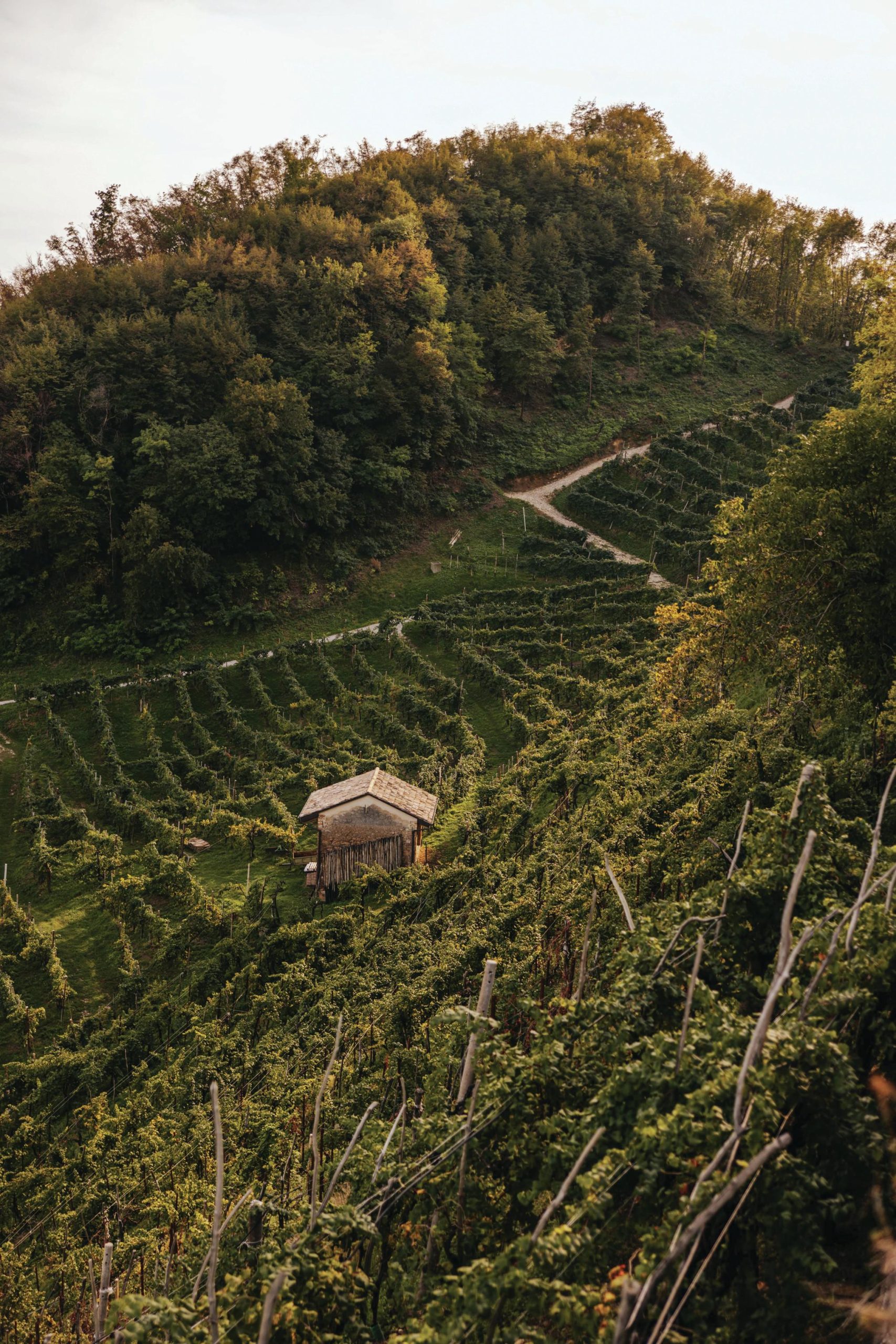This website uses cookies so that we can provide you with the best user experience possible. Cookie information is stored in your browser and performs functions such as recognising you when you return to our website and helping our team to understand which sections of the website you find most interesting and useful.
Val d’Oca: a contemporary classic
Val d’Oca has been a driving force within Prosecco Superiore DOCG and neighbouring Asolo Prosecco Superiore DOCG from the beginning, as db discovers.

Val d’Oca comes from the famous conical hills between Conegliano and Valdobbiadene north of Venice that gave birth to Prosecco. It is the wine of the region’s most important cooperative – the Cantina Produttori di Valdobbiadene that was founded in 1952 by 129 grape growers. That number has since grown to about 600 members, farming just over 1,000 hectares between them.
More than half the vineyards, totalling around 560ha, are on the steep slopes that surround the town of Valdobbiadene in Prosecco Superiore DOCG. A further 90ha are located in the neighbouring DOCG of Asolo Prosecco to the west, and the remaining 275ha are found in Prosecco DOC around Treviso.
Having celebrated its 70th anniversary last year, the cooperative behind Val d’Oca has been there from the beginning as this historic wine region slowly gained international recognition. Along the way the wine was elevated to a DOCG in 2009, while the region was awarded UNESCO World Heritage status a decade later. Over time, those who grow the grapes and produce the wine for Val d’Oca have contributed to the task of preserving the heritage of this wine region. The members of the cooperative each see themselves as custodians of what is the heartland of Italy’s most famous sparkling wine.

The spirit of collaboration that led to creating the cooperative just seven years after the Second World War endures to this day. Each member has less than two hectares of vines on average, yet together they have built a powerful force within Prosecco, and a highly sought-after brand in Val d’Oca that was launched in 1990 with a focus on the on-trade.
Described as an ‘icon of style’ and a ‘symbol of elegance’, Val d’Oca has stood out with its satin-finish black bottle since 1997. The packaging is still used for its ‘Classic Cuvée’ line and its Valdobbiadene Superiore di Cartize DOCG. As the most prestigious cru in the whole of Prosecco, the vineyards of Cartizze extend to just 108ha, of which the cooperative members own 14.1ha. Their holdings are even more extensive in those other crus within Prosecco Superiore DOCG known as rive – the narrow strips of vineyards on particularly favoured steep slopes which demonstrate the diversity of terroir within the region. In 2019 the Consorzio identified 43 separate rive covering just under 500ha, or about 6% of the total DOCG. The members of Val d’Oca’s cooperative own 120ha of these very special vineyards, around a quarter of the total, and they have done more than anyone to promote the sites in individual wines.
Val d’Oca has released a Rive di San Pietro di Barbozza, a Rive di Santo Stefano and a Rive di Colbertaldo among others, and more are planned. While the big volume base of Prosecco comes from the mechanised vineyards on the Venetian plains, these wines represent the top of the pyramid, the pinnacle of what this sparkling wine can achieve. Mechanisation is banned in the rive vineyards, not that it would be possible anyway. All the grapes are hand-picked, and indeed the members of the cooperative have chosen to keep that rule for all their vineyards, including those in Asolo and Treviso. On the steeper slopes this has been called ‘heroic’ winemaking and with good reason. Every year up to 800 hours of hard, manual labour per hectare are required to work these vineyards, more than four times what is needed on the flat lands. Proof that the effort is worth it can be found in every bottle of Val d’Oca Prosecco, and the range is proudly displayed in the Val d’Oca Wine Centre.
The Wine Centre, which describes itself as an “evocative architectural structure reminiscent of Prosecco bubbles”, opened in 2011 to offer tours, tastings and a chance to buy Val d’Oca wines to countless visitors ever since. It was constructed from recycled and certified materials under the principles of bio architecture which endeavour to maximise energy efficiency. It has a thermal insulation system, employs geothermal technology and is bedecked with photovoltaic solar panels.

Being wholly owned by its members, all of whom are intimately connected to the land that they tend through the growing season until the grapes are ready to be picked by hand, it is only natural the cooperative cares deeply about the environment. At Val d’Oca, sustainability is not simply some corporate buzz word: it really matters, and has done from the very beginning.
From the start the cooperative has sought to produce the best possible quality in harmony with doing the best it can for the environment. This includes protecting biodiversity in the vineyards, ensuring that viticulture has no negative impact on the land, and protecting the health of the winegrowers, communities and consumers. In January 2020, the cooperative obtained the VIVA certification – a sponsored profile standard developed by the Italian Ministry of the Environment and Protection of the Territory. Its aim is to measure the sustainability of the ‘vine-wine supply chain’, based on four parameters of air, water, territory and lastly vineyard.
In 2021 the company worked with its members to ensure that all the vineyards were SQNPI certified, allowing the wine labels to carry the bee logo. Then, last year the cooperative was awarded the Equalitas certification which seeks to ensure a sustainable supply chain from the vineyard to the end consumer.
As a result of these initiatives and two internal reports on the subject, the company’s impact is now carefully measured in terms of environmental, economic and indeed its wider socioenvironmental sustainability.
In 2022 the cooperative was awarded the Equalitas certification which seeks to ensure a sustainable supply chain from the vineyard to the end consumer.

Val d’Oca is currently sold in over 56 countries around the world, with exports accounting for 38% of sales. As of 2021, the largest importers were Scandinavia, particularly Norway and Finland, followed by Switzerland and Germany giving Europe 27% of the total. That year 9% was shipped to North America, and 2% to Asia, Oceania and Africa.
Recently the four wines of the new Classic Cuvée range have been in the spotlight, each in its satin-finish black bottle with a different coloured foil to distinguish one from the other; copper for Valdobbiadene Prosecco Superiore DOCG Millesimato Extra Dry; silver for the Brut equivalent; blue for Extra Brut, and pink for Prosecco DOC Rosé Millesimato Brut.
Collectively, they are seen as the best expressions of the territory, the passion of the growers and the experience and intuition of the winemakers. These are wines not just for an aperitif or to accompany dessert, but to pair with meat and fish dishes throughout the meal.
Val d’Oca in numbers (2022-23)
Total vineyards: 1,075ha, of which:
• 14.4ha are Cartizze
• 487.9ha are Prosecco Superiore DOCG
• 74.3ha are Prosecco Superiore DOCG Rive
• 95.1ha are Asolo Prosecco Superiore DOCG
• 278.4ha are Prosecco DOC
• 124.9ha are other varieties (such as Chardonnay and Pinot)
Membership: The cooperative currently has 591 members, each with an average holding size of 1.8ha. The total number of bottles produced each year is 14,844,015.
Market share:
- Italy: 62%
- Rest of Europe: 27%
- North America: 9%
- Asia, Oceania & Africa: 2%

Related news
A 'challenging yet surprising' vintage for Centre-Loire in 2024
Matching terroir to variety at Burgenland’s Kollwentz winery

